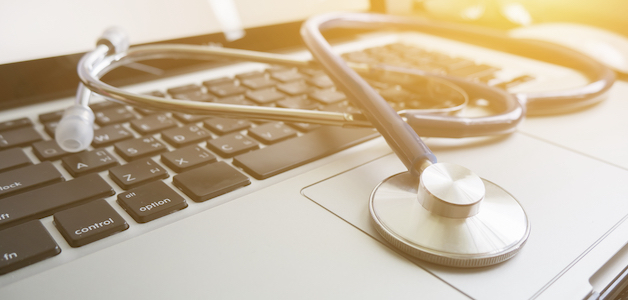
How much of your practice is data related? It’s the foundation for a lot of things.
It’s used to control and monitor patient care. It helps analyze workforce needs.
And because of the ability to use real-time data in all sorts of ways, we’re rethinking every part of the business.
Keeping data is critical. Cybersecurity has risen to be a significant concern for all healthcare practices.
But as we focus more on cybersecurity, it’s equally important to consider physical security measures as they still have their importance.
The convergence of physical and cyber security
Physical security measures of the past have been relatively simple: Have a key in hand to open a door. But technology is changing everything, creating a more sophisticated system. Now you might need keycards and PINs, facial scans, or vehicle registration to get through a door. Activation requires full disclosure of who is entering.
Physical access increases risk
We tend to think of criminal behavior as a threat from halfway around the world; hackers are working diligently to find doorways through the infrastructure. Yet your greatest risk may be sitting at the desk next to you. The risk increases exponentially if someone has access to even a portion of your data. This means that an upgrade in simple physical technology can increase cybersecurity tenfold. Moving from a key entry to an access control system alerts you to activity, and may prevent a disgruntled employee from moving forward.
Securing vulnerable devices
Much of our world is now mobile. We use smartphones, tablets, and laptops for everyday functions. Being portable benefits us by being able to work from anywhere in the world. It also adds risk as it makes those data, and therefore our data, more vulnerable to criminal activity.
While you might not be able to control the security procedures used by your employees while away from the office, you can have a say in data access from their devices. A robust security plan will have a complete digital device security plan. It’ll define things like:
- Password updates
- Two-factor authentication for some systems
- What systems an employee has access to
- Wi-Fi procedures
- Update protocols
It all starts with a plan. If you create a strategy and train employees on the right way to secure technology and data against potential breaches, they’ll be more diligent by default.
Healthcare employees hold the power
In 2021, 108 individual medical organizations were impacted by ransomware attacks. It included 2,302 separate hospitals/clinics/organizations, putting almost 20 million individual patient records at risk.
Physical and cybersecurity threats rely heavily on the rituals of the employees of your practice. One wrong move can open up the door to criminal potential. Clicking on a phishing email is no different than dropping a key right outside the door. It’s an invitation in.
Yet there are easy solutions. If your organization hasn’t considered how physical and cybersecurity work together, maybe it’s time you did. A security assessment is a start to determining where your risks currently are, and what it would take to improve security.
Cybersecurity threats will only continue in frequency and intensity in the coming years. An integrated approach to physical and cybersecurity will strengthen your security, and reduce your vulnerability.
Are you prepared?
For IT Strategy, Cloud Conversion, or Help Desk Services reach out to us at Silver Linings Technology 360-450-4759.


